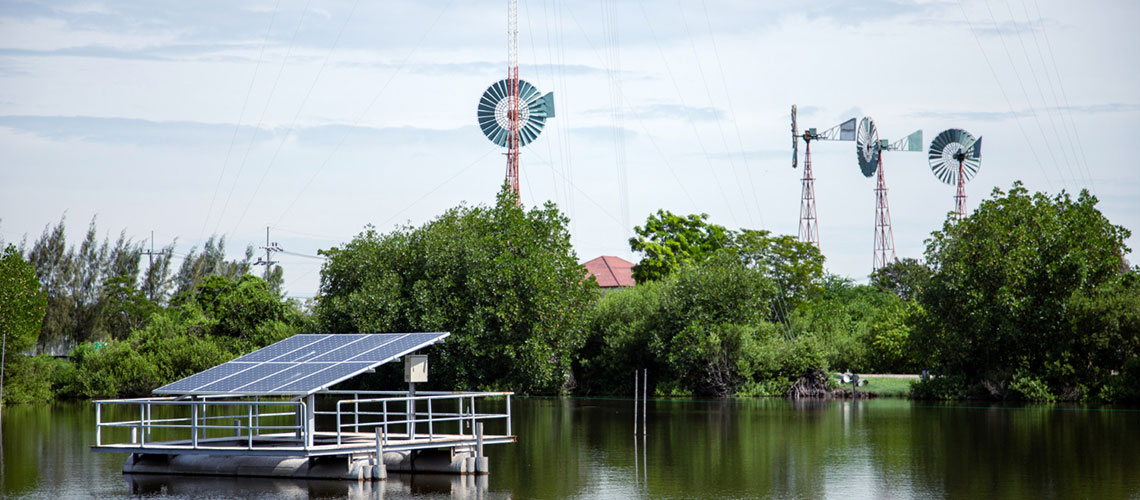Hybrid Energy Systems: Understanding Their Functionality, Benefits, and Technical Hurdles

Imagine a future where your home or business runs on clean energy around the clock—no power cuts, no sky-high electricity bills, and definitely no guilt about harming the environment. That future isn't far off. In fact, it's already here—thanks to hybrid renewable energy systems. These smart setups combine two or more sources of renewable power, like solar and wind, to ensure that energy is available whenever you need it.
Now, we all know the sun doesn’t shine at night, and the wind doesn’t always blow. That’s where hybrid systems shine. They cleverly mix different renewable sources to make sure there’s a constant, reliable energy supply. At Jindal India Renewable Energy Limited, we are actively exploring and investing in such systems across India. With the push for renewable power generation growing stronger, hybrid solutions are gaining ground as the smarter, more dependable alternative to single-source setups.
So, let’s break it down—what exactly are these systems, how do they work, what makes them so effective, and what technical roadblocks still need ironing out?
What Are Hybrid Renewable Energy Systems?
A hybrid renewable energy system is like having the best of both worlds when it comes to energy. It usually brings together two or more clean energy sources—think solar paired with wind or solar combined with biomass—along with a backup energy storage unit, which is often a battery or a diesel generator. The main aim? To keep the energy flowing smoothly, even when one source isn’t pulling its weight.
Picture it this way: during the sunny hours, solar panels are hard at work, powering your home or business. When night falls or the skies turn grey, wind turbines or stored battery energy step in to fill the gap. It’s a smart strategy to avoid the ups and downs that can come with relying solely on one type of renewable energy.
Why Hybrid Systems Are a Big Deal
Hybrid renewable energy systems are gaining popularity for several solid reasons. Here’s why everyone, from city planners to homeowners, is paying attention:
1. Better Reliability
When one energy source drops out, another kicks in. That means no blackouts or disruptions, especially important in rural or remote areas where traditional grid power might be shaky.
2. Optimised Use of Natural Resources
Each renewable source has its strengths. Solar is great during the day; wind often blows stronger at night. Hybrid renewable energy lets you make the most of both, reducing waste and increasing efficiency.
3. Lower Operational Costs in the Long Run
Yes, the upfront cost can be higher. But over time, reduced fuel costs and minimal maintenance (compared to diesel generators or coal-powered plants) make these systems much more wallet-friendly.
4. Eco-Friendly Energy
Hybrid renewable energy means fewer greenhouse gas emissions, less dependence on fossil fuels, and a cleaner, greener future for all of us.
5. Energy Security
For industries, hospitals, and schools—especially those in off-grid locations—having a reliable source of power is critical. Hybrid systems ensure an uninterrupted energy supply without compromising sustainability goals.
The Technical Hurdles: What’s Holding Us Back?
While hybrid renewable energy systems are exciting, they’re not without challenges. Here are some of the major technical bumps in the road:
1. High Initial Costs
Setting up a hybrid system can be expensive. Solar panels, wind turbines, inverters, controllers, and battery storage—all add up quickly. Financial incentives and government policies can help bridge the gap, but affordability is still a barrier for many.
2. Complex Integration
Combining different energy sources and ensuring they all “talk” to each other smoothly is no easy task. Each source behaves differently, and managing the switch between them requires advanced control systems and smart software.
3. Storage Limitations
Batteries are crucial for storing excess energy, but current battery technologies are expensive, have limited capacity, and require regular replacement. As storage tech evolves, this will become less of an issue.
4. Maintenance Know-How
With more components involved, hybrid systems require more technical expertise for installation, troubleshooting, and regular maintenance. This can be tricky, especially in rural or underdeveloped areas.
Final Thoughts
Hybrid renewable energy is changing the way we think about power. Hybrid renewable energy systems offer a stable, sustainable, and efficient way to harness the best of nature—sunlight, wind, and more—without depending on just one source. And while there are still a few speed bumps on the road, Jindal India Renewable Energy Limited believes that the journey is well worth it.
As the world moves toward cleaner energy, hybrid renewable energy setups will play a key role in making sure we get there, without the lights ever going out.